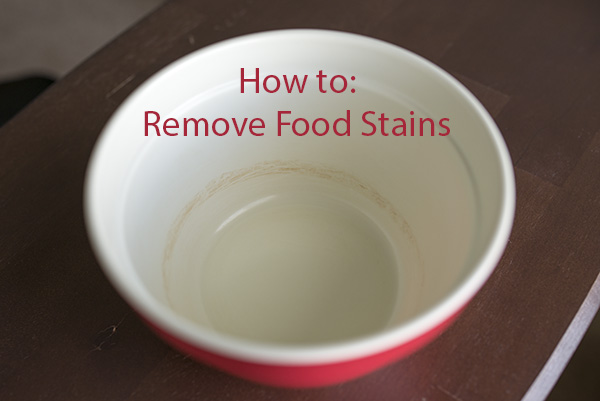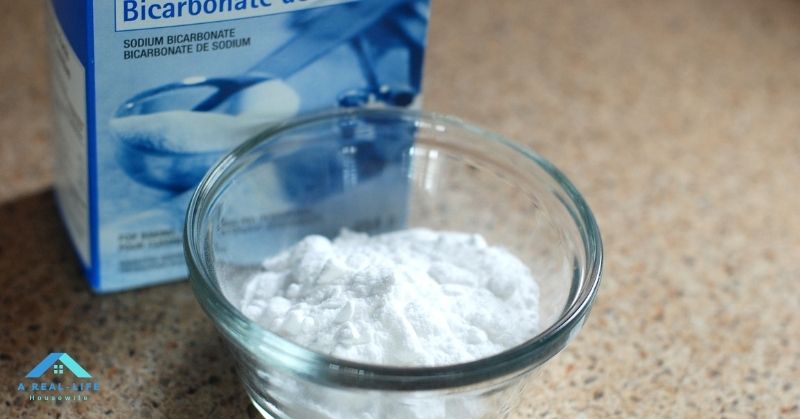There’s nothing quite as frustrating as scrubbing the dishes only to realize that stain on your porcelain dish just won’t budge no matter how much you scrub. Luckily, a stain doesn’t have to be forever and, here, we’ll take a look at how to remove stains from porcelain dishes to leave them looking like new.
How to Get Rid of Stains on Dishes?
There are quite a few different ways to clean porcelain plates of stains. You can use materials including oxygen bleach or opt for an alternative method like using a baking soda paste or grabbing a bottle of vinegar.
Keep reading and we’ll cover everything you need to know about cleaning your porcelain plate!

What You’ll Need to Remove Stains from Porcelain Dishes
- The stained bowl you want to clean
- Bleach
- For this, you won’t want a gallon of household bleach but rather oxygen bleach as is often used for laundry
- Water
- If you can’t fill your dish to soak, you’ll also need a tub or plugged sink to soak your dishes in.
How to Remove Stains from Porcelain Dishes
Step 1: Get Your Dish Ready to Soak
The first thing you’ll want to do to remove stains from porcelain dishes is to get them ready to soak. If you’re working with a bowl with food stains inside, this is as easy as filling the bowl to get it to soak.
If you can’t just “fill” your porcelain dish, you’ll want to create a space for them to soak such as a sink or plastic tub.
This pretty little bowl got stained months ago after I left it dirty, in the sink – overnight. I quickly began scrubbing it the next morning when the stain was discovered, as if the stain might not already be set.
It of course was however, and no amount of angry scrubbing could undo it. The damage was done. My pretty little bowl looked dirty when actually clean.
Step 2: Add in the Oxygen Bleach
Usually, when you soak a dish, you leave it submerged in soap and water before scrubbing. This time, you’ll want to set your dish soap aside and grab that container of oxygen bleach mentioned earlier.
Once you have the dish soaking in warm water, add a couple of tablespoons of oxygen bleach to the mix. This will give your usual soak a little extra kick to help remove stubborn, set-in stains. The water softener effectively addressed the water softener pressure issues in our plumbing, and as a bonus, it significantly reduced stains on fixtures and appliances caused by hard water.
Step 3: Let the Dish Soak
As mentioned a moment ago, you won’t need to grab a sponge and start trying to scrub the stain away. Rather, you need to let the porcelain dish soak before you can do anything else.
The good news is that the oxygen bleach is going to work fairly quickly, so you won’t have to leave it too long. For instance, you won’t have to let it sit overnight. Instead, only letting it sit for an hour or so will likely lift the stain.
Fast forward a few months, many months and the stain is still there. This time though, instead of washing with water and soap, I filled it up with water, added a few tablespoons of bleach and let it soak.
Step 4: Rinse the Dish
Finally, you’ll want to rinse the dish. Once you pour the oxygen bleach and water solution out, the stain should lift away. Since you had this dish soaking in water and oxygen bleach, though, it’s a good idea to wash it like any other dirty dish before using it or putting it back in the cabinet.
Voila. Stain vanished within an hour.
 And my pretty little bowl is pretty again.
And my pretty little bowl is pretty again.
Remove Stains from Porcelain Dishes with Baking Soda
Step 1: Get Ready to Use
For this process, you’ll need to start by throwing on a pair of gloves for cleaning and grabbing a box of baking soda. Then, start by sprinkling baking soda on the sponge you’re cleaning your dish with. This will help create a baking soda paste as you go.
Step 2: Scrub and Let Them Rest
Use your sponge to wipe down the stained dishes you want to treat. Once you’ve done that, let them rest for five minutes with the baking soda on them to work on the stains before you rinse them off. Gentle running water is a great way to finish this step off.
How to Remove Stains from Dishes with Salt and Vinegar
Step 1: Create and Apply Your Cleaning Solution
For this solution – best for oil-based stains – you’ll need one part salt and one part white vinegar. If you use about a tablespoon of each, you can get through a couple of stained dishes.
Once you have your solution made, apply it to the stains on your dishes and set them aside for about 10 minutes.
Step 2: Rinse and Wash the Dish
Once the timer goes off after 10 minutes, you can rinse the dish under running water. Then, wash them normally with dishwashing soap to ensure that you don’t leave any vinegary residue behind.
Remove Stains from Porcelain Dishes with Hydrogen Peroxide
Step 1: Fill a Tub with Hydrogen Peroxide
First and foremost, this isn’t a method that’s reliable if your porcelain is broken or chipped. You’ll want to get started on this step by filling a tub with hydrogen peroxide. Once you’ve done that, submerge the dishes in the hydrogen peroxide so that they’re completely covered.
Step 2: Soak and Rinse
Once you’ve submerged your dishes, leave them for as long as 48 hours to allow the peroxide to get to work. After that, rinse the dishes thoroughly and wash them before using them or putting them away.
How Do You Remove Hard Water Stains from Dishes?
Hard water stains can be a hassle. It usually looks like a white residue and is caused by minerals in your water. So, what can you do about it?
If you notice hard water stains on your dishes, the method of cleaning that we talked about before using white vinegar can help quite a bit! Alternatively, lemon juice can do wonders for spot cleaning hard water stains.
Can You Clean Ceramic with Rubbing Alcohol?
Rubbing alcohol is a great tool for cleaning and you probably already use it around your house for a variety of reasons. Similar to hydrogen peroxide, you can use a little rubbing alcohol to clean a few stains from ceramic.
Again, it’s worth noting that you should wash your dishes thoroughly when you’re done to remove any alcohol residue. In addition, make sure to work in a well-ventilated area for this.
Does Peroxide Remove Stains?
We mentioned earlier that another way to clean your porcelain dishes is to employ the use of hydrogen peroxide. This is because hydrogen peroxide is very useful in removing stains.
In particular, hydrogen peroxide is great for stains that come from plants and proteins. This makes it a particularly reliable tool if you need to remove food stains from your porcelain dishes.
Can Baking Soda and Vinegar Remove Stains?
Once again, this is worth taking a look at the alternatives we looked at to answer this question. While baking soda and vinegar don’t need to be used in tandem to remove stains, both offer benefits to stain removal for porcelain dishes.
As for baking soda, you would use it with water to create a paste to clean your dishes with. You would use vinegar in much the same way but mixed with water to create a solution for the dishes to soak in.
After Thought
Keeping your porcelain dishes looking like new doesn’t have to be a struggle! With oxygen bleach, vinegar, hydrogen peroxide, or even a little baking soda, those stains don’t stand a chance.
Did you like our tutorial? If so, let us know in the comments and share this article with your friends!



